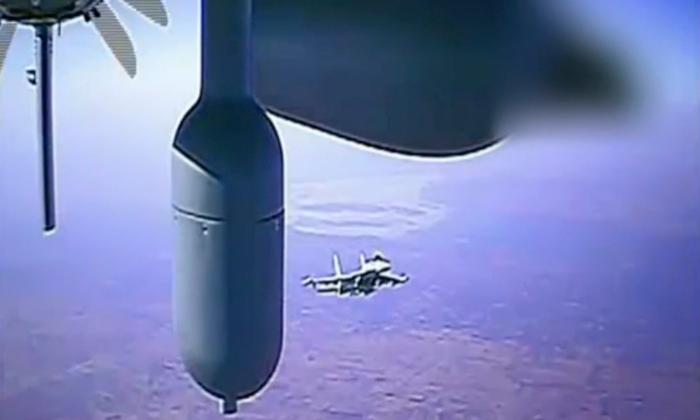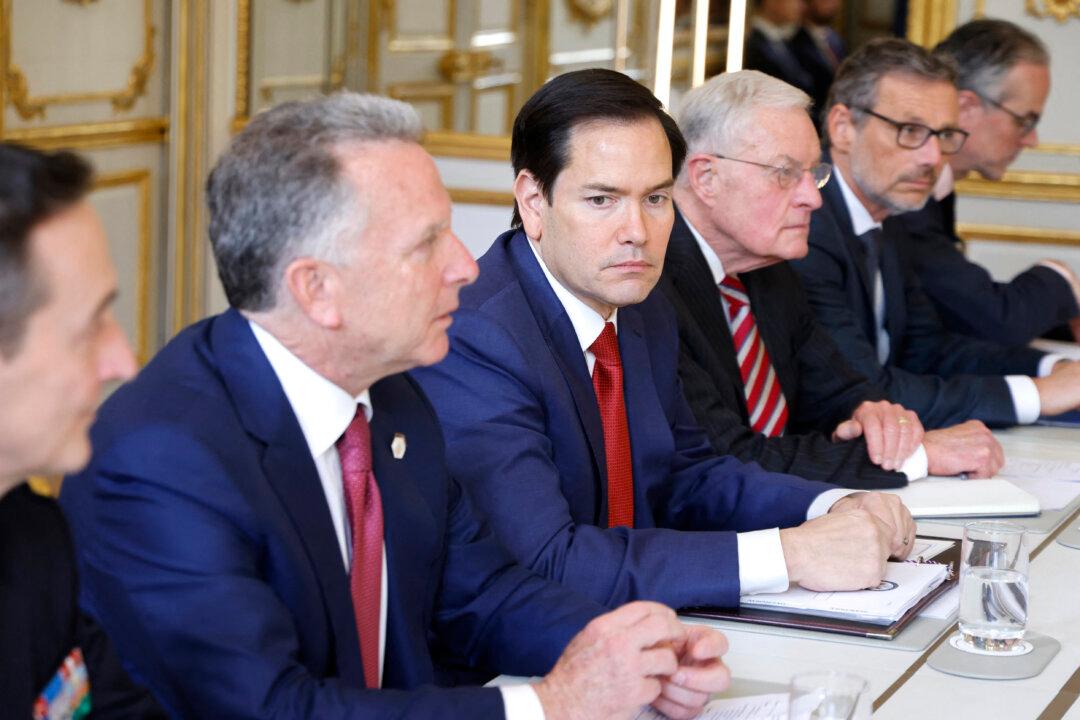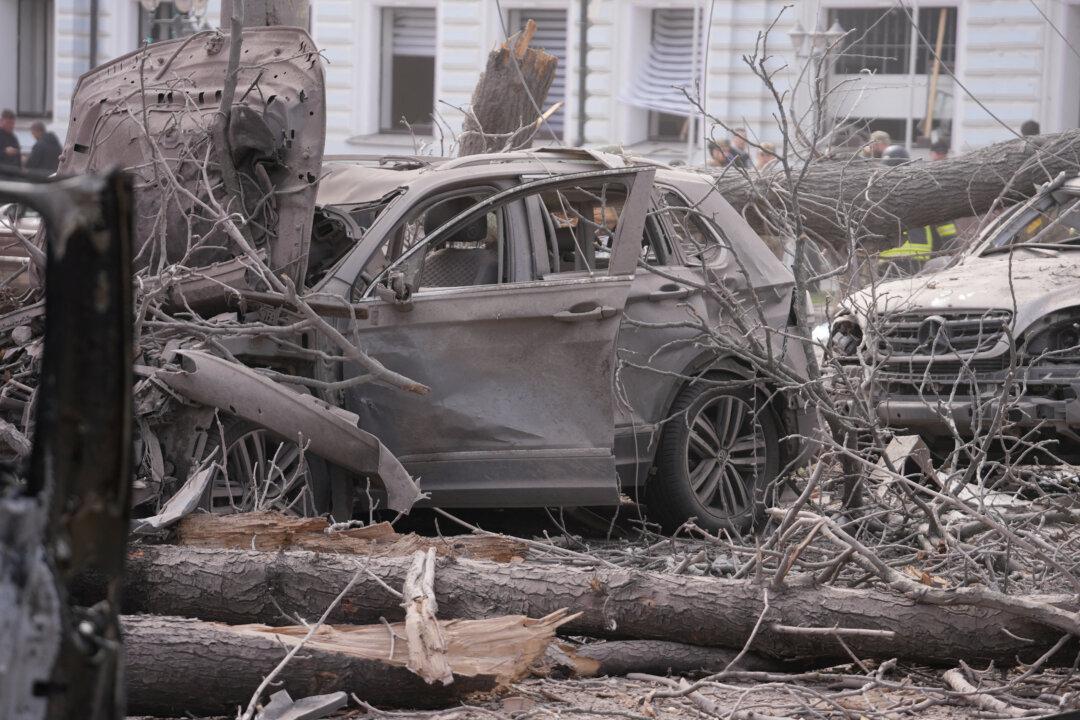Russia hopes to avoid military escalation with the United States in Syria but is nevertheless “ready for any scenario,” Russian President Vladimir Putin said recently when asked about increasingly frequent encounters in Syrian airspace.
“Russia is ready for any scenario but does not want a direct military clash,” he told reporters on July 29.
“No one wants this.”
In recent months, Moscow and Washington have frequently traded blame amid a spate of close calls in Syrian airspace.
A day after Mr. Putin made the remarks, Moscow alleged that a U.S. MQ-9 Reaper drone had flown “dangerously” close to a Russian Su-34 fighter jet near the Syrian city of Raqqa.
A midair collision was averted only due to the “professionalism of Russian pilots, who took the appropriate countermeasures,” Oleg Gurinov, a Russian defense ministry official, said on July 30.
Russian officials further allege that U.S. drones, along with F-16 and F-35 fighter aircraft, routinely breach Syrian airspace and violate flight safety procedures.
Washington rejects the assertions.

Blame Game
Following such incidents, the United States typically accuses Russia of engaging in “reckless behavior” and harassing its aircraft in the skies over Syria.Last week, the Pentagon said that a Russian jet fighter operating in Syria had fired a flare at a U.S. Reaper drone, “severely” damaging the drone’s propeller.
“Fortunately, the MQ-9 crew was able to maintain flight and safely recover the aircraft to its home base,” U.S. Central Command (CENTCOM) stated on July 25.
Russia’s “blatant disregard” for flight-safety protocols “detracts from our mission to ensure the enduring defeat of ISIS,” the U.S. military added.
CENTCOM further called on Russian forces in Syria “to put an immediate end to this reckless, unprovoked, and unprofessional behavior.”
U.S. Defense Secretary Lloyd Austin has issued similar appeals.
“We call upon the Russian leadership to make sure they issue guidance to their troops to abide by the laws of the sky,” Mr. Austin said on July 29.
Moscow blamed last week’s incident on the United States, saying the U.S. drone had intentionally harassed Russian aircraft.
“Of special concern is the near midair collision of a coalition MQ-9 aerial vehicle with Russian warplanes near [the Syrian city of] Al-Bab,” Mr. Gurinov said at the time.
Both sides also traded blame after a similar incident in early July that involved three Russian fighter jets and as many U.S. Reaper drones.
Earlier this month, U.S. Army Gen. Mark Milley, chairman of the Joint Chiefs of Staff, acknowledged a recent “uptick” in such incidents.
“I wouldn’t overstate it too much,” he told reporters. “Our forces have adequate rules of engagement and authorities provided to defend themselves.”
Nor have such incidents been confined to Syrian airspace.
In mid-March, a Russian Su-24 reportedly struck the propeller of a Reaper drone near Russian-controlled Crimea, forcing the drone to crash into the Black Sea.

Back Channels
Both sides acknowledge the existence of back-channel communications that seek to head off any misunderstandings.In his recent remarks, Mr. Putin referred to a “special mechanism, set up at U.S. initiative, aimed at preventing such conflicts.”
The “heads of certain [Russian] departments,” he added, were in direct contact with their U.S. counterparts to “consult on any crisis situation.”
“This shows that no one wants clashes,” the Russian president said.
Mr. Austin said the Pentagon is engaging with Russia in the Syrian theater “using established channels to convey our concern, and we’ll continue to engage senior [Russian] leadership as appropriate.”
Nevertheless, he added, “We will continue operating as we have always operated ... and will protect our interests and resources.”
The United States continues to maintain a military presence in Syria with the ostensible aim of preventing a resurgence of the ISIS terrorist group.
Said to be an offshoot of al-Qaeda, ISIS overran vast swaths of Syria and Iraq in 2014. The group was largely eradicated by 2019, prompting then-President Donald Trump to withdraw most U.S. troops from Syria.
But several hundred U.S. troops remain in the country, concentrated mainly in Syria’s northeast.
Damascus views the continued U.S. military presence as an illegitimate “occupation” and a violation of its national sovereignty, a view shared by Iran and Russia, both of which have kept forces in Syria—at the latter’s invitation—since 2015.
In March, Gen. Milley visited U.S. troops in northwestern Syria, where they continue to work with local Kurdish allies opposed to Damascus.
Speaking to reporters during his visit, he said U.S. troops are still needed in Syria to ensure the “enduring defeat of ISIS” and the “continued support of our friends in the region.”





